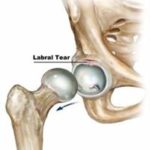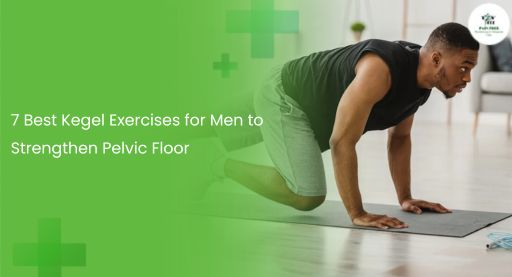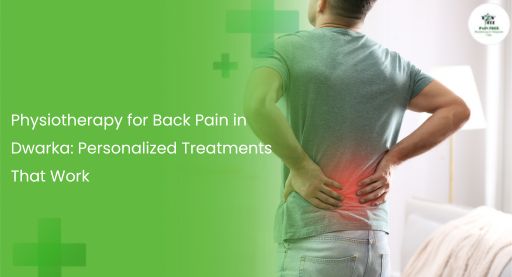What Is Cervical Spondylosis Physiotherapy Exactly?
Neck stiffness ruining your day? That nagging ache shooting down your arm while working or scrolling your phone? Yeah, you might be dealing with cervical spondylosis, a fancy term for age-related wear and tear in your neck bones and discs. But here’s the good news: cervical spondylosis physiotherapy might just be the game-changer you didn’t know you needed.
Hold up what is cervical spondylosis physiotherapy exactly? Is it some magical neck massage or a boring list of exercises you’ll never actually do? Well, let’s unpack the mystery, toss out the medical jargon, and dive into what this treatment really offers minus the fluff.
Cervical Spondylosis Physio: The Game Changer
You’re probably wondering if this is just another “alternative” therapy that promises the moon and delivers a stress ball. But nope, it’s legit. Cervical spondylosis physiotherapy focuses on relieving pressure on nerves, improving mobility, and strengthening the muscles that support your spine all without a single pill or invasive procedure.
Here’s what makes it a go-to solution:
- Customized Exercises: Tailored stretches and strength training
- Postural Training: Correcting neck and spine alignment
- Manual Therapy: Hands-on techniques to release muscle tension
- Pain Management Tools: Heat, ice, ultrasound, and TENS therapy
When done consistently (and that’s the catch consistently), it doesn’t just manage pain; it targets the root cause.
What Makes Cervical Spondylosis Physiotherapy Work?
Still skeptical? Totally fair. The trick is understanding how and why it works.
Here’s what physiotherapy can do for your cervical spine:
- Boost Blood Circulation: Gets nutrients flowing to damaged tissues
- Reduce Nerve Compression: Loosens stiff joints pressing on nerves
- Improve Range of Motion: No more robot-neck syndrome
- Train Muscles: Stronger neck = less pressure on joints
- Rewire Your Pain Response: Teaching your body to chill out
And here’s the kicker: many people notice improvement within weeks, sometimes even days, when the program is tailored to their specific symptoms and lifestyle and know how you can manage this pain effectively.
Is Physiotherapy Good for Cervical Spondylosis?
Short answer? Absolutely as long as you’re not expecting a miracle after one session.
Here’s why it’s recommended by spine specialists worldwide:
- Non-Invasive Relief: No surgery or scary side effects
- Addresses Root Cause: Not just masking symptoms
- Suits All Ages: From office workers to retirees
- Cost-Effective: Way cheaper than surgery or long-term meds
Let’s be real: popping painkillers might help you power through a meeting, but physiotherapy helps you function long-term.
Which Therapy Is Best for Cervical Spondylosis?
With options like acupuncture, chiropractic adjustments, and even Ayurveda on the menu, it’s easy to feel like you’re lost in a buffet of therapies.
So which therapy reigns supreme?
It depends on your symptoms, but here’s the top contenders:
- Physiotherapy (Most Recommended)
Strengthens muscles, reduces stiffness, and realigns posture. - Traction Therapy
Gently stretch your spine, creating space between compressed vertebrae. - Heat and Cold Therapy
Great for temporary relief and inflammation control. - Dry Needling/Acupuncture
Works wonders for muscle knots and nerve sensitivity.
Still, if you’re asking which one has the most science-backed success stories? Physiotherapy takes the crown hands down.
Cervical Spondylosis Symptoms: When Should You Worry?
Let’s face it, we’ve all woken up with a crick in the neck. But when does it cross the line into something serious?
Common symptoms to keep on your radar:
- Constant neck pain or stiffness
- Pain radiating to shoulders or arms
- Tingling or numbness in hands or fingers
- Frequent headaches
- Muscle weakness
If these symptoms stick around or keep getting worse, don’t tough it out. It’s time to see a professional, preferably one with a physiotherapy degree and not your cousin who watched a spine video on YouTube.
How to Cure Cervical Spondylosis Permanently?
Here’s the cold, hard truth: there’s no permanent cure at least not in the fairy-tale sense. But can you live virtually pain-free and stop it from getting worse? You bet.
Follow these long-term strategies:
- Commit to Physiotherapy – Keep up with your prescribed exercises
- Fix Your Posture – At your desk, in bed, even while texting
- Stay Active – Regular movement keeps joints happy
- Manage Stress – Tension = tight muscles = more pain
- Watch Your Weight – Less pressure on your spine
Consistency is your best friend here. You don’t need perfection, just a daily effort.
FAQs
Q: Is cervical spondylosis physiotherapy painful?
A: Not usually! Some discomfort during certain stretches is normal, but it shouldn’t feel like torture. If it does, tell your therapist pain isn’t the goal.
Q: How long does it take to see results?
A: Many people feel some relief within 2–4 weeks, but it depends on how severe your condition is and how consistent you are.
Q: Can I do exercises at home?
A: Yes! Most physiotherapists will give you a home plan. Just don’t skip sessions thinking “I’ll do it tomorrow.” Tomorrow turns into next week real fast.
Q: Will I need physiotherapy forever?
A: Not necessarily. Once symptoms improve and you’ve learned proper posture and exercises, you may only need occasional check-ins.
Q: Can cervical spondylosis go away on its own?
A: It’s a degenerative condition, so while symptoms can fade, the wear-and-tear doesn’t magically reverse. That’s why management is key.
Conclusion
So, circling back, what is cervical spondylosis physiotherapy exactly? It’s your neck’s new best friend. While it won’t magically erase years of wear and tear, it can absolutely dial down the pain, restore your movement, and keep your spine in check without drastic measures.
Sure, it’s not a quick fix. But with the right guidance and a bit of discipline, you’ll be saying goodbye to neck pain one stretch at a time.
Ready to move your neck without wincing? Then maybe it’s time to give cervical physiotherapy a real shot because your spine deserves a little TLC.











